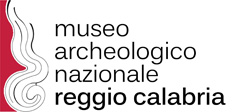The National Archaeological Museum of Reggio Calabria has been recognized as one of Italy’s most prestigious archaeological museum institutions, following the autonomy established by the MiBACT Reform of 2014.
The building that houses it is among the first in Italy to be designed exclusively for museum exhibitions. It is named after Marcello Piacentini, one of the leading exponents of early 20th-century architecture, who conceived it with a modern approach after visiting the most important museums in Europe. Located in the heart of the city, the Museum is an essential element of Reggio Calabria’s landscape and daily life. On one side, it faces the central Piazza De Nava, while on the other, it overlooks the “I. Falcomatà” waterfront, offering a stunning view of the Strait.
The National Archaeological Museum was born from the fusion of the State Museum with the Civic Museum of Reggio Calabria, the latter opened on 18 June 1882 to house the numerous archaeological finds from the area. Its seat was initially on the premises of the Municipal Library, but as the collections grew, between 1887 and 1889, it was moved to a building next to the Roman baths, which had just been discovered at the time. During the earthquake of 1908, the Civic Museum building suffered extensive damage, so the process of establishing a National Archaeological Museum was accelerated, strongly desired by, among others, Paolo Orsi, who was appointed the first Superintendent of Excavations in Calabria in 1907. On 22 May 1948, an agreement was signed between the Municipality of Reggio Calabria and the General Directorate of Antiquities of the then Ministry of Public Education, which provided for the latter’s use and acquisition of the collections of the Civic Museum, which was thus abolished.


















